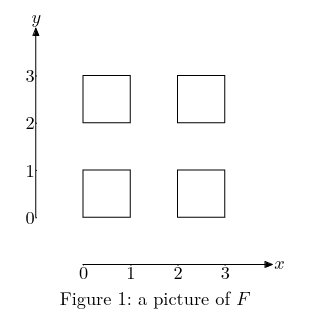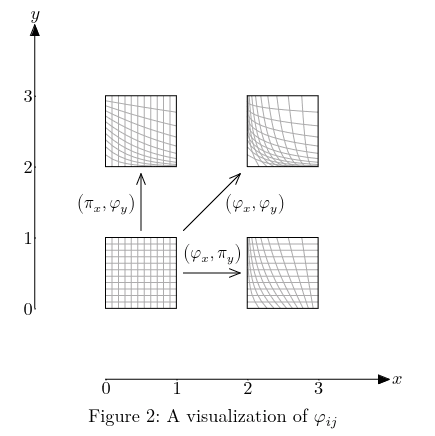This is a technical post researching infinite factor spaces
I define a general measurable factor space that shows that the history can't be straightforwardly generalized to the infinite case. The example shows the following:
-
Unlike in the finite setting, the condition in the definition of generation (see below) can't be characterized by requiring that the atoms of are rectangles. In the example, we show that this would imply an orthogonality where the implication is not true.
-
In measurable spaces, conditional histories can only be well-defined up to a chosen system of nullsets. In the example, we show that a minimal generating index function does not exist. (We will show in a later post that the history exists if we fix nullsets.)
To talk about orthogonality, we first have to introduce the concepts for measurable spaces. For now, we focus on the index set being finite. A straightforward generalization from the finite case is the following. We have measurable spaces and construct . Let be a feature (i.e. measurable). Let be . We define We note, that we assume w.l.o.g. that we assume that are pairwise disjoint. Recall that is the set of product probability distributions on .
The history should now be the smallest such . Furthermore, for orthogonality defined by we should have
The idea for the example consists of choosing , such that consists of four points, where the points will always fall into one unit square each. Call those unit squares . Choosing to be a diffeomorphism allows us to calculate the conditional probabilities explicitly. Almost all choices of where is a rectangle for all , will fail to satisfy .
Example 1
Let . For , let endowed with the Borel sigma-algebra.
Now .
consists of 4 unit squares.
We will now define a , such that is a rectangle of four points.
Let be the four unit squares that consists of.
Let . will be the function that chooses the new coordinate.
Let
Let
We assume that all are diffeomorphisms.
Define and by .
First we assure ourselves, that indeed has rectangle atoms.
Let , then
Now the projections would be orthogonal, if we had
We will now calculate the conditional probabilities by Lebesgue differentiation.
We first note that is continuous. Each consists of four points, one in each that form a rectangle.
Because is compact, it is easy to show that concentrates around for small delta, i.e.
where is the Hausdorff metric for the standard metric .
We will use the uniform distribution
to show .
Let for .
Take a such that does not lie on the edge of , i.e.
By Lebesgue differentiation, we know that Since the left side equals , we have is a version of .
Now we will split up into its parts in the unit squares .
Let . Let .
We have
Since is continuous, we have
Let and let , then
Now clearly, if and only if
Since this has to hold for almost all and the determinants are continuous, it has to hold for all , we have to have
Let and . Now
Now
It is clear that you can choose and without this property.
Let for example
We have let . Clearly, and
Furthermore, and
With these chosen, we have that .
Example 2
We will now argue, that the history can't exist. Let . Let and . We will show . Then, since the history would be a subset of all such , we would have . But we have just seen that and therefore the history is not a generating index function.
Now, and
If is a nullset, clearly , since is constant a.s. Otherwise, let and etc.
Now since is a (finite) rectangle with positive measure, we clearly have for that for all . For , we clearly have .
Since these sets are closed under intersections and generate and the sets generate , we have that .

